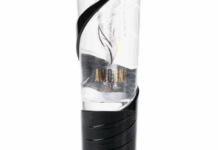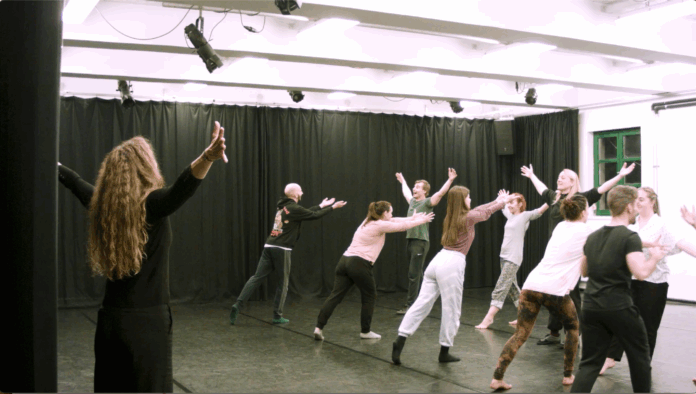The Perdekamp Emotional Method helps actors and everyday people feel again, stay safe at work, and avoid burnout in real life.
When you live between late-night shoots, rooftop events, gallery walks, and red-eye flights, it can be strangely easy to feel… nothing. The schedule is full. The glass is full. But inside, things can feel flat, numb, or quietly overloaded.
That’s where the Perdekamp Emotional Method comes in.
In PEM, students learn that “emotions are something really helpful.” Not messy, not dangerous—helpful. In classes around the world, actors and everyday people are learning to access emotions they thought they’d lost, and to do it in a way that keeps their nervous system calm, grounded, and safe.
How the Perdekamp Emotional Method Makes Big Feelings Feel Safe
PEM began with a simple but radical wish from its founder: intense performances without broken people. As Stephan Perdekamp puts it, he wanted actors to reach real emotions, “but in a safe way. I didn’t want to be responsible for colleagues getting hurt or having long-term psychological problems.”
“I didn’t want to be responsible for colleagues getting hurt or having long-term psychological problems.”
Stephan Perdekamp
Instead of asking the mind to relive trauma, the Perdekamp Emotional Method works through the body. Students learn to find tiny “access points” in the nervous system and build them into clear movement patterns. Those patterns are emotions. Over time, it becomes possible, as Sarah Victoria says, that “everyone knows you can be emotionally intense and safe at the same time.”
“everyone knows you can be emotionally intense and safe at the same time.”
Sarah Victoria
PEM master instructor
In a PEM classroom, the mood is focused but surprisingly light. There’s structure, there’s rigor, but there’s also relatability and sense of humor. People laugh when they notice, “Oh, that’s what my fear actually feels like in my body.”
Inside a PEM Classroom: Learning to Feel Again
The stories coming out of PEM are both gentle and wild. One of their oldest students was 88 and a half years old and simply “wanted to learn about emotions at that age.”
Actors share how they used to “go method” in ways that felt like emotional self-harm—staying in grief or terror all weekend just to be “ready” for Monday’s shoot. One actress told PEM she had to stay in a crying state from Friday to Monday, only for the scene to be delayed. As Sarah says, “it was so costly for her psychologically, emotionally, that she was drained afterwards.”
With PEM, scenes like that change. You build the fear or grief physically for the take, and then you switch it off. As Stephan explains, “The actor doesn’t have to sacrifice their health in order to give insights to the audience.”
PEM classes have the flavor of a great rehearsal in a loft or a black-box space: serious play, clear technique, and a fun, almost fun-loving respect for the craft. That same flavor carries whether the class is in a studio, a university hall, or online.
Burnout, Bioelectricity, and Why PEM Feels Different
If you’ve ever powered through a Vegas residency, a festival run in Berlin, or a brutal quarter on Wall Street, you already know burnout. PEM treats it not as a mystery but as mechanics.
Stephan explains that stress is often a jam between the body’s “fight” and “flight” patterns. Fear wants to run. Aggression wants to push through. If neither can complete, they freeze and eat energy all day. Do that for years and you don’t just feel tired—you feel like your body simply won’t start.
PEM breaks that loop by training each pattern on its own. You run fear. You train aggression. You learn how to build intensity and how to release it. Over time, the nervous system remembers: I have options.
This isn’t vague self-help. The method has been studied in Austria and is now moving into new research with German institutions, including trials on people dealing with addiction. The work also lines up with what psychologists say about how emotions live in the body, not just the mind (for readers who like to go deep, the American Psychological Association has excellent resources on that topic here).
This is not a cult of suffering. It’s a very human, very hands-on way to feel more, not less.
Beyond Actors: PEM for Everyday Life in High-Pressure Cities
PEM started with actors. It didn’t stay there.
Families saw their actor friends coming home calmer. Partners noticed less reactivity, more ease. Soon non-actors were asking, “Can we learn this too, please?”
Today, there are PEM programs for:
-
People in high-stress jobs recovering from burnout
-
Folks dealing with anxiety who want tools, not just theories
-
People on the autism spectrum, coached in cooperation with psychologists
-
Individuals returning to work after nervous-system-related leave in cities like Hamburg
Sarah puts it simply: when she’s not in stress, she has more space. More space to create. More space to help. If you live in San Francisco, Atlanta, or Aspen, that might sound like the dream: more bandwidth for art, work, kids, nightlife, and the fun-loving parts of life that make it all worth it.
PEM sits comfortably next to breathwork, somatic therapy, and nervous system regulation. It’s a craft, but it’s also a wellness tool.
How to Experience the Perdekamp Emotional Method
Right now, PEM is based in Brisbane and Hamburg, with regular work in New York and Los Angeles and growing hubs in Seattle and Portland. There are:
-
PEM Intensives (PEM 1–3) for the six basic emotions, mixed emotions, and character/text work
-
Long-term programs (up to half a year) for serious training
-
An “On Demand” series where you can learn crying, laughing, or character building on cue, from home
-
Online coaching for actors and non-actors worldwide
Because the method works with bioelectricity and clear physical cues, “you can teach it online because it’s so precise… it’s electricity, even more so.” In other words, you don’t have to live in LA or Berlin to get this flavor of training.
As Stephan says of PEM, “It’s a biological awareness.” It’s not chakras, not mysticism—just the nervous system learning new tricks.
FAQ: Learning to Feel Again with PEM
Q: Is the Perdekamp Emotional Method just another form of method acting?
A: No. Traditional method acting often asks you to relive real memories. PEM does not. It uses physical “access points” in the nervous system to create emotions safely, without convincing your mind that the house is actually on fire. You can be intense in the scene and neutral a few seconds after “cut.”
Q: Do you have to be an actor to benefit from PEM?
A: Not at all. PEM now works with non-actors, people facing burnout, individuals returning to work after nervous system issues, and even people on the autism spectrum, often in cooperation with therapists. If you deal with stress, relationships, or modern life in cities like Chicago or Hong Kong, you qualify.
Q: Will using a “technique” make my performances robotic?
A: According to the teachers, it’s the opposite. Once emotion is reliable in the body, the mind is free. As Sarah says, “You don’t actually play the emotion. You have the emotion in the body because you’ve trained it already.” That gives more spontaneity, more nuance, and room for your own fun-loving creativity.
Feeling Forward: A Quiet Revolution in How We Act and Live
From a Halloween immersive in Los Angeles to a tiny theater in Berlin, the demand for real, honest emotion keeps growing. The Perdekamp Emotional Method is quietly rewriting the rules: you can give everything and still go home whole. You can learn to feel again—more fully, more safely, more playfully.
If that idea pulls at you, whether you’re a series regular, a chef in Vegas, a founder in San Francisco, or a parent in Atlanta, PEM might be worth exploring. Your emotions are not the problem. As PEM reminds us, “emotions are something really helpful.” The real shift is learning how to use them.
the Perdekamp Emotional Method helps actors and everyday people feel again, stay safe on set, and avoid burnout in real life.

















![Get Your Indie Movie Made (Responsibly): Jeff Caruso of Wrapbook Leads the AFM 2025 Film Finance Conversation [Exclusive Interview] American Film Market](https://dailyovation.com/wp-content/uploads/2025/11/AmericanFilmMarket2025-1-218x150.jpg)















scalable method, global reach, claims to solve burnout, works on Zoom…. Smart
I did immersive horror acting in LA last Halloween. If I’d had PEM, I might not still be jumping every time someone opens a closet. LOL
emotionally intense and safe at the same time? cool, can you talk to my ex about this?
Low-key obsessed that an 88 1/2 year old was like, “Yeah, I’d like to learn emotions now.”